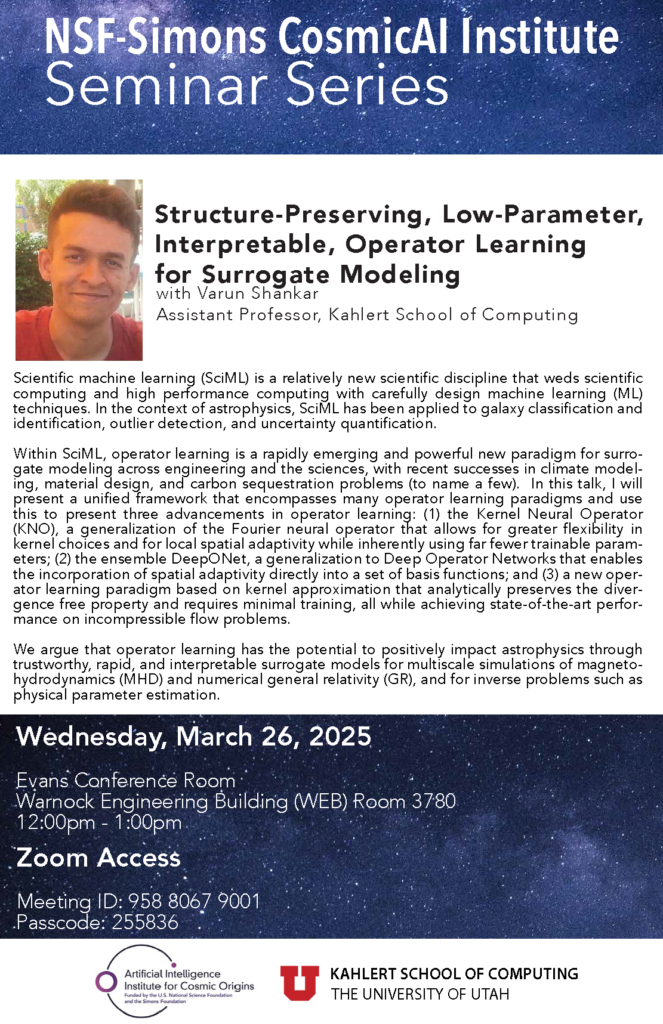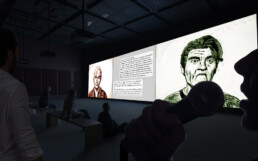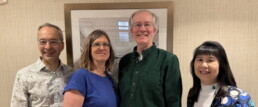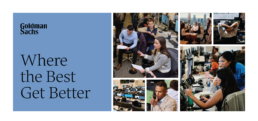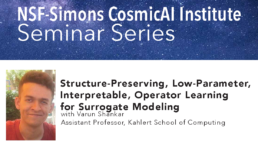Organick 2025 with Vinod Vaikuntanathan—October 27, 2025
Monday, October 27, 2025
The Robert H. and Katharine B. Garff Building Auditorium; University of Utah
1731 East Campus Center Drive, SLC, Utah 84112
5:45 PM: Refreshments
6:00 PM: Lecture
Vinod Vaikuntanathan
Massachusetts Institute of Technology professor, MIT Computer Science and Artificial Intelligence Laboratory principal investigator
In Math We Trust: A Glimpse into Modern Cryptography
Abstract: Can you communicate securely with someone you’ve never met? Can you prove your identity without revealing any personal information? Can you run a medical study without seeing patient data? Modern cryptography gives us ways to make sense of these seemingly paradoxical questions, and it develops solutions to these questions using a rich mathematical toolkit. We will start with the basics of cryptography and go on a gentle guided tour of its latest “magic tricks”: zero-knowledge proofs that reveal nothing; secure computation that lets rivals collaborate; and homomorphic encryption that computes on scrambled data. We will end with some of the big challenges ahead— including trust in the age of AI, and security in the age of quantum computing.
Transit and Parking Information:
LECTURE IN GARFF AUDITORIUM
The Robert H. and Katharine B. Garff Building
1731 East Campus Center Drive, SLC, Utah 84112
PUBLIC TRANSIT: Ride UTA Trip Planner
PARKING IN THE CENTRAL CAMPUS GARAGE: Please park in any unmarked stall on the second level (P2). Tickets will be given if you park anywhere but (P2).
The (P2) column color is BLACK.
Click the linked image below for a map or click here for Google Maps location.
*From the birds-eye view from above, the Central Campus Garage is under the soccer field.
Tuesday, October 28, 2025
Student Town Hall
12:30 PM Refreshments and Lecture
Location TBD
Lecturer Bio
Vinod Vaikuntanathan is the Ford Foundation Professor of Engineering in the EECS department at MIT, a principal investigator at MIT CSAIL, and the chief cryptographer at Duality Technologies. He earned his BTech degree from the Indian Institute of Technology Madras in 2003, and his SM and PhD degrees from MIT in 2005 and 2009, respectively. After a postdoctoral stint at IBM Research, a year as a researcher at Microsoft, and two years as a faculty member at the University of Toronto, Vinod joined the faculty of MIT EECS in September 2013. Vinod’s research is on the foundations of cryptography and its applications to theoretical computer science at large. He is known for his work on fully homomorphic encryption (a powerful cryptographic primitive that enables complex computations on encrypted data), as well as lattice-based cryptography (which lays down a new mathematical foundation for cryptography in the post-quantum world). Recently, he has been interested in the interactions of cryptography with quantum computing, as well as with statistics and machine learning.
Vinod’s work has been recognized with the Harold E. Edgerton Faculty Award (2018), the Godel Prize (2022), the Simons Investigator Award (2023), the Distinguished Alumnus Award from IIT Madras (2024), a Best Paper Award from CRYPTO 2024, and test of time awards from IEEE FOCS and CRYPTO conferences. He was also named a MacVicar Faculty Fellow in 2024 for exceptional teaching and mentoring.

Remembering Kent Farrell Smith
Kent Farrell Smith, a Kahlert School of Computing emeritus faculty member and former department chair, passed away on September 12, 2025.
Born and raised on the shores of Bear Lake in Fish Haven, Idaho, Kent moved to Utah to study electrical engineering at Utah State University. He first came to the University of Utah as a PhD student with an interest in early computers. His interest in computer science provided the opportunity for involvement with early computer research, working towards the innovation of integrated circuit design. Following his PhD, Kent served as a professor and researcher at the University of Utah for both the computer science and electrical engineering departments.
Kent collaborated with innovators behind such landmarks as the first video game, Pong; the first artificial heart; the first artificial eye implant; military innovations such as the Gatling gun; and CMOS, still used today in a majority of electronics. Kent remained active in circuit design and defense contracts for the remainder of his life, while also remaining actively involved in his church and the lives of his children, grandchildren, and great-grandchildren.
His viewing will take place on Thursday, September 18, 2025, followed by a celebration of Kent’s life on Friday, September 19, 2025.
https://www.memorialutah.com/obituaries/kent-smith

Distinguished Colloquium - Daniel Kroening
Thursday, September 11, 2025
Kennecott Mechanical Engineering Building (MEK)
Room 3550
5:15pm - lecture
AI Accelerators 1010
Abstract
LLMs are arguably among the largest technology investments since the moon landing, and rely on custom hardware accelerators both for training and inference.
The talk will cover accelerating LLM transformer architectures using the combination of a compiler and a systolic compute array. The key enabler to achieving meaningful performance using the systolic compute array are deep program analyses of the model architecture in the Neuron Compiler. I will briefly report on our effort to build a verified (using Lean) compiler from XLA/HLO to the Trainium ISA.
BIO
Daniel Kroening is a Senior Principal Applied Scientist at Amazon, where he works on the correctness of the Neuron Compiler for distributed training and inference. Prior to joining Amazon, he worked as a Professor of Computer Science at the University of Oxford and is the co-founder of Diffblue Ltd., a University spinout that develops Al that targets code and code-like artefacts. He wrote the CBMC (for C), JBMC (for Java) and EBMC (for SystemVerilog) model checkers; CBMC is the engine of Kani (for verifying unsafe Rust).
He has received the Semiconductor Research Corporation (SRC) Inventor Recognition Award, an IBM Faculty Award, a Microsoft Research SEIF Award, the Wolfson Research Merit Award, and the Rance Cleaveland Test-of-Time tool award. He serves on the CAV steering committee and was co-chair of FLOC 2018, EiC of Springer FMSD, and is co-author of the textbooks on Decision Procedures and Model Checking.
Tokyo's Mori Art Museum Features an AI Art Installment Utilizing Work from Kahlert School of Computing Faculty
In the bustling Roppongi district in Tokyo's Minato ward lives the Mori Art Museum, a contemporary art space nestled in the 54-story Roppongi Hills Mori Tower.
A recent exhibit at Mori Art Museum entitled "MACHINE LOVE: Video Game, AI and Contemporary Art" contained approximately 50 works of contemporary art utilizing game engines, AI, and virtual reality (VR). Among the works exhibited was German American artist Diemut Strebe's "El Turco/Living Theater", featuring code written by Kahlert School of Computing Assistant Professor Ben Greenman.
The piece presents two character puppets on screen. The puppets speak out loud as their lips move in sync, and their words appear on screen like a chat history. One puppet portrays an inventor of smart home devices being interviewed by the other puppet. However, the course of the conversation can change, and each performance is unique.
One puppet is controlled by a human. Another puppet is controlled by Anthropic’s Claude AI. The audience is faced with a challenge: which puppet is AI, the inventor or the interviewer? Does it matter?
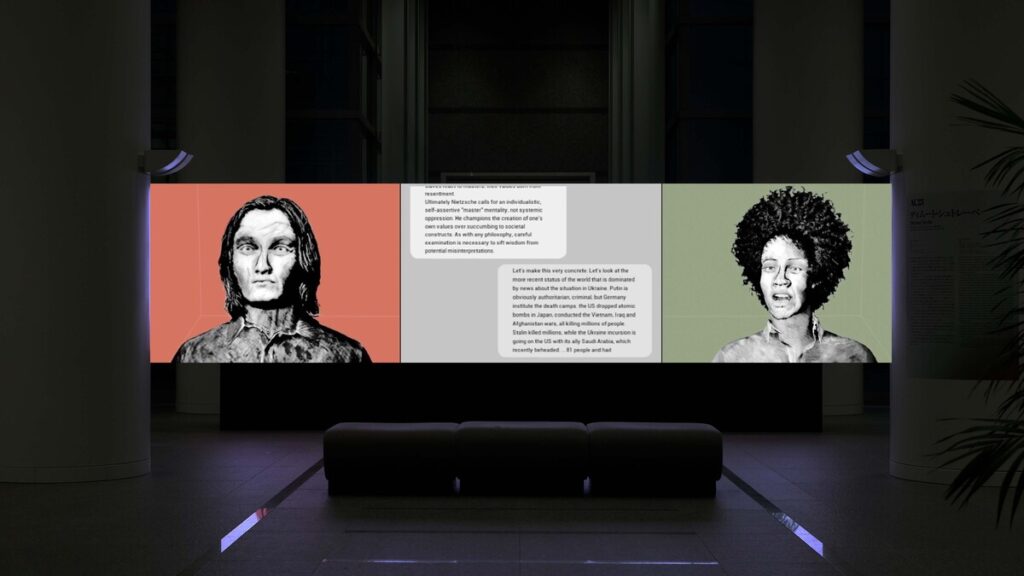
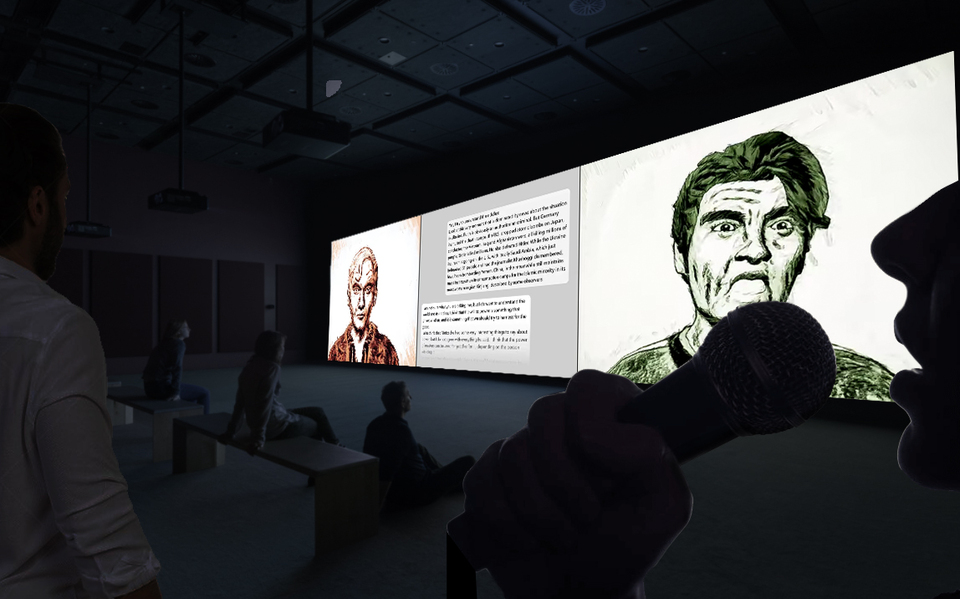
Behind the scenes, this project combines several technologies: including Claude API, Azure text to speech, Amazon speech to text, and Unreal Audio to Face. The piece uses the Racket programming language, developed by Kahlert School Professor Matthew Flatt, to synchronize these different technologies in an event-based framework. For example, Audio to Face can sleep until Claude has written the next part of its puppet's script.
Select performances of "El Turco/Living Theater" are available on the artist's YouTube channel.
Greenman would like to extend a special thanks to Varun Shankar for providing access to a machine for software development.
Recognizing Those Who Build a Vibrant Technical Community
Special Awards Honor Computing Professionals for Impactful Service
ACM, the Association for Computing Machinery, recognized five individuals with awards for their exemplary service to the computing field on May 28, 2025. Representing diverse areas, the 2024 award recipients were selected by their peers for building a vibrant community that benefits both their colleagues and the broader society. This year’s awardees drove advancements in computer science curriculum, cyberinfrastructures, computer science education, and assistive robotics. They were formally recognized at ACM’s annual awards banquet on June 14, 2025, in San Francisco.
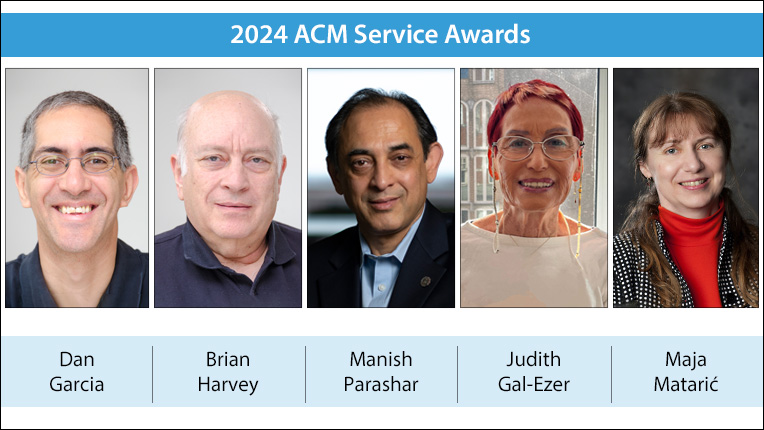
Manish Parashar, Professor, University of Utah, receives the ACM Distinguished Service Award for service and leadership in furthering the transformative impact of computer and computational science on science and engineering.
Parashar’s record of service includes leadership at the National Science Foundation (NSF), where he developed NSF’s strategic vision for a national cyberinfrastructure, as well as at the White House’s Office of Science and Technology Policy (OSTP), where he developed the Future Advancement Computing Ecosystem Strategic Plan (FACE). For ACM, Parashar served two terms as editor-in-chief of ACM Transactions on Autonomous and Adaptive Systems (ACM TAAS), and has led steering, organizing and programming committees for numerous ACM conferences.
The ACM Distinguished Service Award is presented on the basis of value and degree of services to the computing community. The contribution should not be limited to service to the Association but should include activities in other computer organizations and should emphasize contributions to the computing community at large.
Dan Garcia, Teaching Professor, UC Berkeley, and Brian Harvey, Teaching Professor Emeritus, UC Berkeley, receive the Karl V. Karlstrom Outstanding Educator Award for their advocacy of and advances in education to bring the beauty and joy of computing to all students, especially those from historically underrepresented communities.
Together Garcia and Harvey have been instrumental in expanding computer science education, most notably through the development of the Beauty and Joy of Computing (BJC) curriculum, which began as a national pilot for the CSforALL movement. A key part of this effort was Snap!, a blocks-based programming language on which Harvey collaborates with principal developer Jens Mönig. Subsequently Garcia and Harvey and BJC co-PI Tiffany Barnes went on to expand BJC’s reach by training over 1,000 teachers, offering the curriculum in Spanish, and developing a middle school version, BJC Sparks. Importantly, the BJC Course at Berkeley is the only EECS course to exceed 50% female enrollment, and once exceeded 70%.
The Karl V. Karlstrom Outstanding Educator Award is presented annually to an outstanding educator who is appointed to a recognized educational baccalaureate institution. The recipient is recognized for advancing new teaching methodologies; effecting new curriculum development or expansion in Computer Science and Engineering; or making a significant contribution to the educational mission of ACM. Those with 10 years or less teaching experience are given special consideration. A prize of $10,000 is supplied by Pearson Education.
Judith Gal-Ezer, Professor Emerita, Open University of Israel, receives the Outstanding Contribution to ACM Award in recognition of her sustained contributions to computer science education policy and research and, more broadly, to the ACM Europe Council.
Gal-Ezer has been an internationally recognized leader in computing education. For her accomplishments, she has received the ACM Karl V. Karlstrom Outstanding Educator Award as well as the ACM SIGCSE Award for Outstanding Contribution to Computer Science Education. Gal-Ezer has been very active in the ACM Europe Council and its sub-committees. She represents ACM Europe in the Informatics for All (I4All) coalition—a collaboration between ACM Europe, Informatics Europe, CEPIS and IFIP. This ambitious initiative was created to promote informatics education in primary and secondary schools across Europe. The sustained advocacy of I4All has been instrumental in the European Commission’s decision to prioritize informatics education at all stages of the curriculum.
The Outstanding Contribution to ACM Award recognizes outstanding service contributions to the Association. Candidates are selected based on the value and degree of service overall and may be given to up to three individuals each year.
Maja Matarić, Professor, University of Southern California, receives the ACM Eugene L. Lawler Award for Humanitarian Contributions within Computer Science and Informatics for pioneering socially assistive robotics (SAR) for improving wellness and quality of life for users with special needs.
Over the past two decades, Matarić has been the leading figure in the field of socially assistive robotics. These robots are designed to gain insights into the drivers of human behavior related to overcoming challenges. The goal of this field is to provide people with personalized assistance to enhance their abilities in areas such as convalescence, rehabilitation, training, and education. Socially assistive robotics is an interdisciplinary field which emphasizes co-design and user participation throughout the development process. Her research is aimed at major challenges, including post-stroke rehabilitation, cognitive and social skills training for children with autism spectrum disorders, cognitive and physical exercises for Alzheimer’s patients, study support for students with ADHD, and personalized therapy interventions for students with anxiety and/or depression.
The ACM Eugene L. Lawler Award for Humanitarian Contributions within Computer Science and Informatics recognizes an individual or group who has made a significant contribution through the use of computing technology. It is given once every two years, assuming that there are worthy recipients. The award is accompanied by a prize of $5,000.
About ACM
ACM, the Association for Computing Machinery, is the world’s largest educational and scientific computing society, uniting computing educators, researchers, and professionals to inspire dialogue, share resources, and address the field’s challenges. ACM strengthens the computing profession’s collective voice through strong leadership, promotion of the highest standards, and recognition of technical excellence. ACM supports the professional growth of its members by providing opportunities for life-long learning, career development, and professional networking.
Mary Hall Elected Vice Chair of Computing Research Association Board of Directors
Mary Hall Elected Vice Chair of Computing Research Association Board of Directors
Goldman Sachs U of U Former Intern Panel - April 3
Event Details
April 3, 2025
5:00 PM- 6:00 PM
Warnock Enginerring Building (WEB) room 1250
Please join us for the U of U Former Intern Panel. This event will provide you an opportunity to learn more about our businesses, network with Goldman Sachs professionals and learn more about ourSummer program opportunities with Goldman Sachs.
This event is open to all sophomore engineering students as well as incoming new analysts and summer analysts.
Goldman Sachs is where exceptional people build extraordinary careers. We hire people with diverse skill sets, interests, and backgrounds – and we provide them with the hands-on experience to business challenges and opportunities to learn firsthand from the very best.
If you are someone who thrives on excellence, join us at our upcoming event to learn more about Goldman Sachs and our long-standing apprenticeship culture.
We look forward to meeting you.
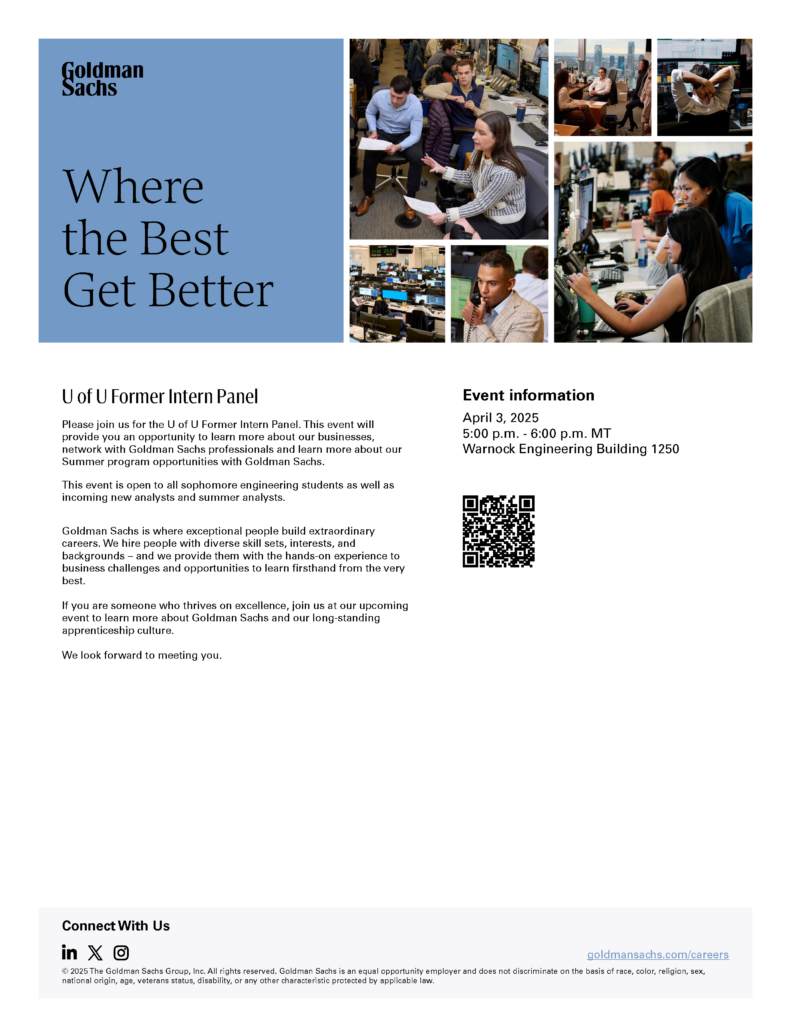
NSF-Simons CosmicAI Institute Seminar Series with Varun Shankar - March 26
Event Information
March 26, 2025
12:00 PM – 1:00 PM
Evans Conference Room, Warnock Engineering Building (WEB) Room 3780
Zoom Access
Meeting ID: 958 8067 9001
Passcode: 255836
Structure-Preserving, Low-Parameter, Interpretable, Operator Learning for Surrogate Modeling with Varun Shankar (Assistant Professor, Kahlert School of Computing)
Scientific machine learning (SciML) is a relatively new scientific discipline that weds scientific computing and high performance computing with carefully designed machine learning (ML) techniques. In the context of astrophysics, SciML has been applied to galaxy classification and identification, outlier detection, and uncertainty quantification.
Within SciML, operator learning is a rapidly emerging and powerful new paradigm for surrogate modeling across engineering and the sciences, with recent successes in climate modeling, material design, and carbon sequestration problems (to name a few). In this talk, I will present a unified framework that encompasses many operator learning paradigms and use this to present three advancements in operator learning: (1) the Kernel Neural Operator (KNO), a generalization of the Fourier neural operator that allows for greater flexibility in kernel choices and for local spatial adaptivity while inherently using far fewer trainable parameters; (2) the ensemble DeepONet, a generalization to Deep Operator Networks that enables the incorporation of spatial adaptivity directly into a set of basis functions; and (3) a new operator learning paradigm based on kernel approximation that analytically preserves the divergence free property and requires minimal training, all while achieving state-of-the-art performance on incompressible flow problems.
We argue that operator learning has the potential to positively impact astrophysics through trustworthy, rapid, and interpretable surrogate models for multiscale simulations of magnetohydrodynamics (MHD) and numerical general relativity (GR), and for inverse problems such as physical parameter estimation.
